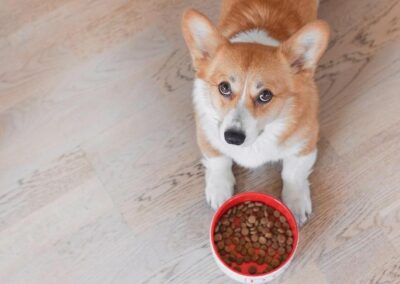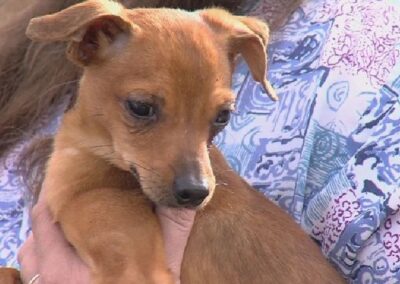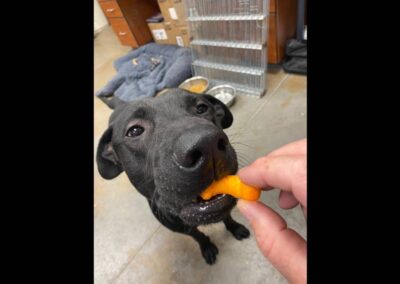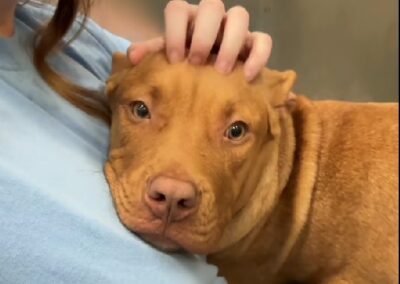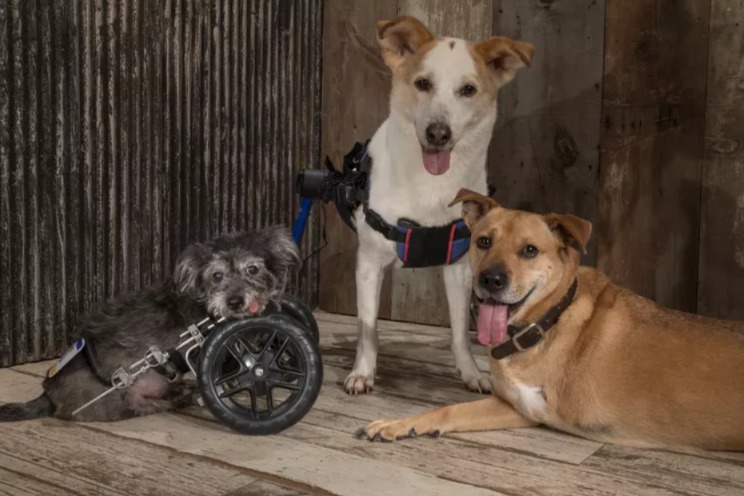
You might scroll past this kind of article without fully pausing—but don’t.
Because what I’m about to share isn’t just a dog story. It’s a lesson in resilience, empathy, and silent strength.
Cyrus, Lucky, and Deuce are three therapy dogs with something unique: each of them has only two legs.
No, this isn’t a gimmick or a stunt. This is real life, real courage.
And together with their human, Domenick Scudera, they visit a rehab hospital in Philadelphia to offer more than comfort—they offer hope.
Here’s how it all began. Scudera, a theater professor and dog lover, believed in showing patients what’s possible beyond limitation.
He already had a three-legged dog named Festus, who visited hospitals as a therapy dog.
As Festus grew old, Scudera started dreaming of dogs who might push boundaries even further—dogs whose very bodies would tell a story.
So he adopted Cyrus—a small terrier mix whose front legs were paralyzed. Cyrus walks using his back legs alone.
Then there’s Lucky, who’s missing both rear legs (he navigates using his front ones), and Deuce, who slants forward walking with just his right-side legs. E
ach has a different story of trauma—car accidents, injuries, surgeries—but now they share a mission: inspiring humans who face amputation, rehabilitation, or challenges of their own.
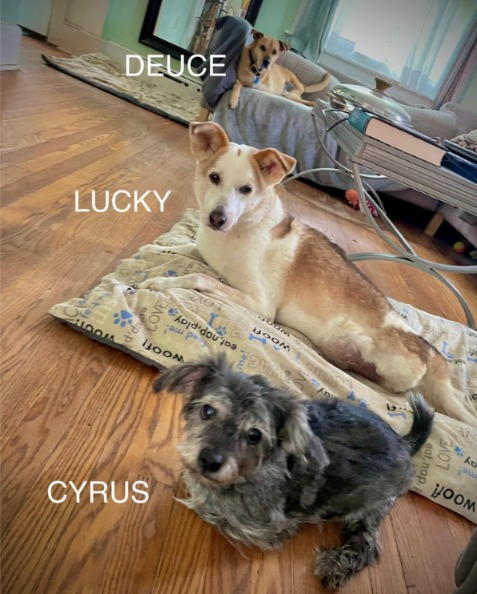
At Bryn Mawr Rehab Hospital, the trio make their rounds.
Patients in the Amputee Treatment and Rehabilitation Program see these dogs walking unassisted, smiling, doing things they’d been told were impossible.
Therapists report the moment a patient sees a two-legged dog walk unbowed is often a turning point.
One occupational therapist, Kathleen Liebsch, witnessed a patient who had lost a leg and an arm on one side look at Deuce and say, “I’m working toward that, too.”
Scudera says people often tell him: “If he can do it, I can do it.” Those words aren’t just nice.
They’re the reason this special team exists. Seeing a dog thrive despite physical loss helps many patients confront their own fears.
At home, the dogs live with love and normalcy. Cyrus likes to be carried like a football sometimes and dislikes when Scudera leaves the house for interviews.
Lucky has boundless energy and curiosity despite his condition. Deuce is calm and measured.
Their daily routines do require adjustments—Lucky can’t feel anything from the waist down, so Scudera sometimes helps him with bathroom needs—but those challenges are small prices for the lives they now lead.
These dogs also attract attention in public. People stop them on walks, ask about their story, and often are moved by what they learn.
Scudera doesn’t shy from telling their journey. He believes that disabled dogs are harder to place, but the reward of sharing space with one is huge.
Their impact is quietly powerful. A child visiting with speech difficulties once typed into a communication board: “I love Cyrus.” Even when visitors can’t speak, the dogs give them a voice.
These three dogs don’t define themselves by what they lack.
They define themselves by what they give: courage, comfort, proof that life’s limitations don’t limit the heart.
They show that difference doesn’t mean “less than”—it can mean richer, more meaningful, and deeply inspiring.
If you ever feel small, unseen, or disadvantaged, look at Cyrus, Lucky, and Deuce.
They walk with parts missing—and souls whole.
They teach us that when life takes something away, it doesn’t mean the story ends. Sometimes, it means a new chapter starts.
